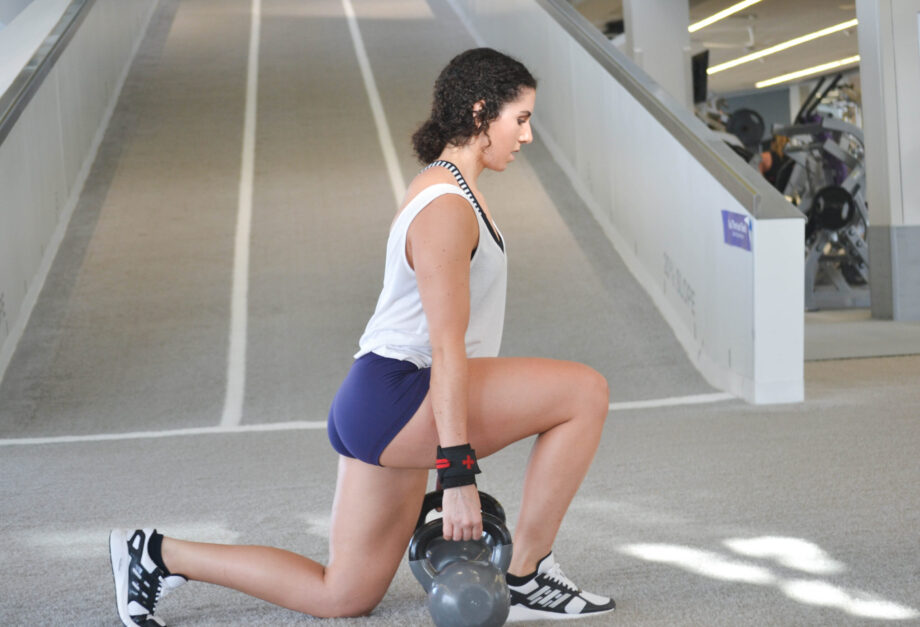We test and review fitness products based on an independent, multi-point methodology. If you use our links to purchase something, we may earn a commission. Read our disclosures.
Do you remember your mother giving you bad-tasting medicine when you were sick? She probably said, “It tastes terrible, but it works, so take it.” Or something to that effect. Some exercises you love are your go-tos, like bicep curls, tricep extensions, and anything hip thrust.
Some exercises are like bad-tasting medicine. You don’t like to do them, but they work. Dollar to doughnuts that lunges is near the top of your list. We’ll get into what muscles lunges work, the benefits of unilateral exercises like lunges, and seven lunge variations for single-leg strength.
So, after you’ve read this, take your medicine, and lunge your way to strength, better balance, and great-looking legs.
Targeted Muscle Groups During A Lunge
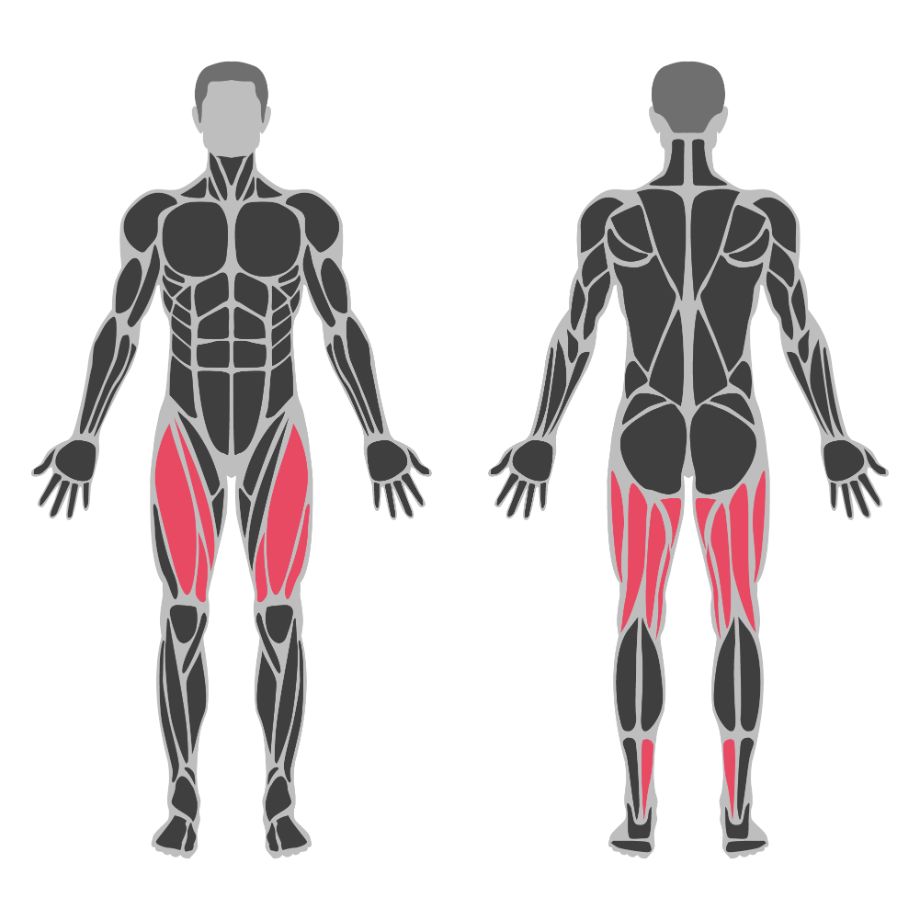
Below are the following leg muscles that lunges train.
Quadriceps
The quadriceps are four muscles, and when they work together, they’re the strongest muscles we have. These four muscles are on the anterior thigh, and their actions during the lunge are knee extension and hip flexion.
Hamstrings
Your hamstrings are a group of three muscles on your posterior thigh: biceps femoris (long and short head), semitendinosus, and semimembranosus. During the lunge, the hamstrings assist the glutes with hip extension and provide stability for the knee joint.
Hip Adductors
The hip adductors, often referred to as the groin muscles or inner thighs, originate in the pubis and ischium bones on the pelvis and insert mainly on the medial surface of the femur (leg bone). Besides controlling the descent into the lunge, bringing the hips together (adduction), and hip range of motion, the adductors assist the hamstrings with knee flexion and the glutes with hip extension.
Hip Abductors
The hip abductors are a muscle group located on the lateral hip, and the three primary hip abductors muscles include the gluteus medius, gluteus minimus, and tensor fasciae late. Evidence1 shows that these three muscles are critical for the stability of the hips and trunk while in the lunge stance..
Glute Max
The gluteus maximus is the largest of the three glute muscles and makes up most of the glute and hip area. The glute max fires up while rising out of the lunge with a powerful hip extension.
Soleus
The soleus calf muscle sits deep to the gastrocnemius on the posterior lower limb. Its primary function is to assist the gastroc in plantarflexion of the ankle joint when rising from the lunge position. Plus, it helps to keep you balanced because it stops you from falling forwards at the ankle while in a single-leg stance.
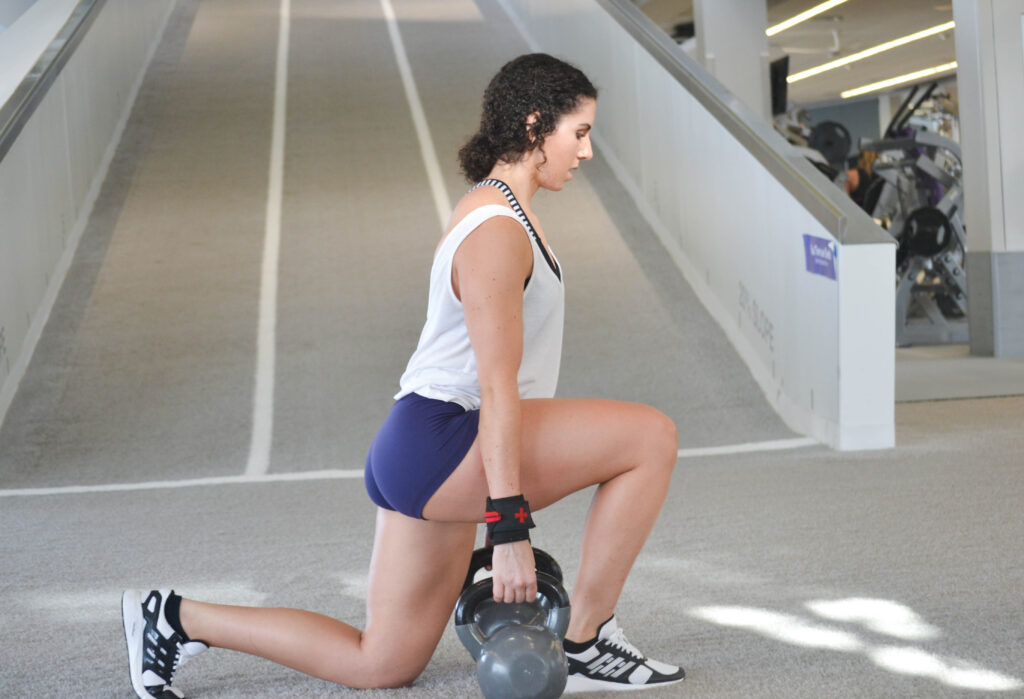
Why Should You Care About Unilateral Exercises For Your Lower Body?
Almost all people have a dominant and non-dominant side, which is not an issue for most people. But when strength imbalances become an issue in the form of muscle strains and uneven muscle development, a change needs to be made. This is one reason you should care about unilateral strength training; below are a few more.
Decrease in Muscle Imbalances
When going about your day or when you’re lifting with two hands and two feet, almost everybody has a dominant and non-dominant side. For example, when you kick or throw a ball from one side. Exercising one side at a time ensures the non-dominant side gets equal love and attention to reduce any existing strength imbalances.
Better Core Stability
While performing unilateral exercises like lunges, split squats, and step-ups, you throw your body off-balance, forcing your core muscles and other lower-body stabilizing to engage to keep yourself upright. Think of it as core training without crunches and planks.
Improved Sports Performance
Many sports and cardio activities that involve running—think football, soccer, basketball—need a lot of unilateral action. Whether it is sprinting, throwing, catching, or jumping, it is rare for both feet to be on the ground simultaneously during these movements. So, if you play unilaterally, you should train unilaterally too.
A small 2018 study2 showed that regularly training unilateral lower body exercises improved the participant’s bilateral vertical jump more than bilateral training alone. Unilateral exercises must be your go-to if you want to out-jump your opponent.
Improves Strength Numbers
Reducing muscle imbalance between legs helps improve bilateral lifting technique and strength numbers. It makes sense when you are more potent on each leg; you’ll be stronger on both legs and less likely to lift with compensations.
Improved Muscle Recruitment
Unilateral lower body exercises make your body work harder and recruit more muscle to perform the same movement. For example, take a split squat and a goblet squat. Because you’re reducing your base of support by training one leg, this engages your hip abductor and core to stabilize your hips while the working leg performs a split squat.
7 Lunge Variations
These seven variations will have most of your lunge needs covered when it comes to lunges. These should be performed with bodyweight at the start, particularly with beginners.
Walking Lunges
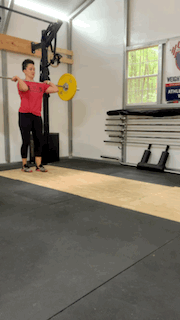
- Stand with your feet hip-width apart in an upright stance,
- Step forward and drop your back knee until your front thigh is almost parallel to the ground.
- Step through with the back foot and rise up from the lunge with your feet together.
- Step forward with the opposite leg and repeat steps 2 and 3.
- Keep alternating legs for even repetitions on both sides.
Reverse Lunge
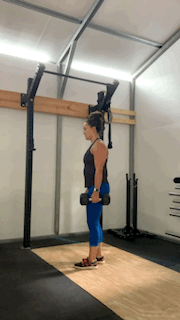
- Stand upright with your feet hip-width apart.
- Then take a step back with your left foot and lower your left knee, so your right thigh becomes parallel to the floor. Your front knee should be above your front foot ankle.
- Keep your chest up and shoulders down, and pause in the bottom position for a beat.
- Push through your right foot and return to the feet together starting position.
- Depending on your goals, you can either alternate sides or do all reps on one side.
Forward Lunge
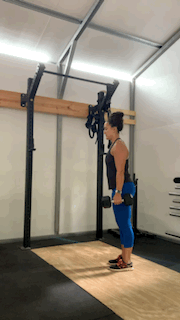
- Stand tall with your feet hip-width apart.
- Take a small or large step forward with the left foot and drop the right knee until the front leg thigh is parallel to the ground.
- Pause for a second, push your left foot through the floor, and return to the feet together.
- Either alternate sides or do all your rep on one side before repeating on the other.
Lateral Lunge (Side Lunges)
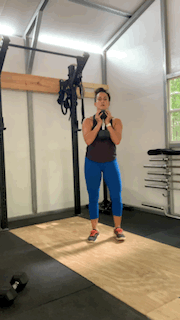
- Stand tall with your feet together, and toes pointed forward.
- Then take a big lateral step with your left leg.
- Hinge into your left hip back while keeping your right leg straight.
- Push your left foot into the ground and return to the starting position.
- You can go either side-to-side or do all the reps on one side.
Barbell Lunges
Note: The above four variations can all be performed with a barbell.
- In the squat rack around shoulder height, either load the barbell on your back or in the front rack position.
- Perform any of the four lunge variations above using the steps explained for each.
- Once you have finished, both sides step inside the squat rack and re-rack the barbell.
Dumbbell Lunges
Note: All the lunge variations on this list, except for the barbell lunge, can be performed with dumbbells. With dumbells, you can hold one or two dumbbells by your side, front rack position or one dumbbell in the goblet position. Kettlebells work, too; It’s a matter of personal preference.
- Hold one or two dumbbells in your preferred position
- Step forward with your right foot into a forward lunge.
- Drop your left knee until your right thigh is parallel to the ground.
- Push through the floor with your right foot and step back your feet to a hip-width stance.
- Either alternate sides or do all the reps on one side and then the other.
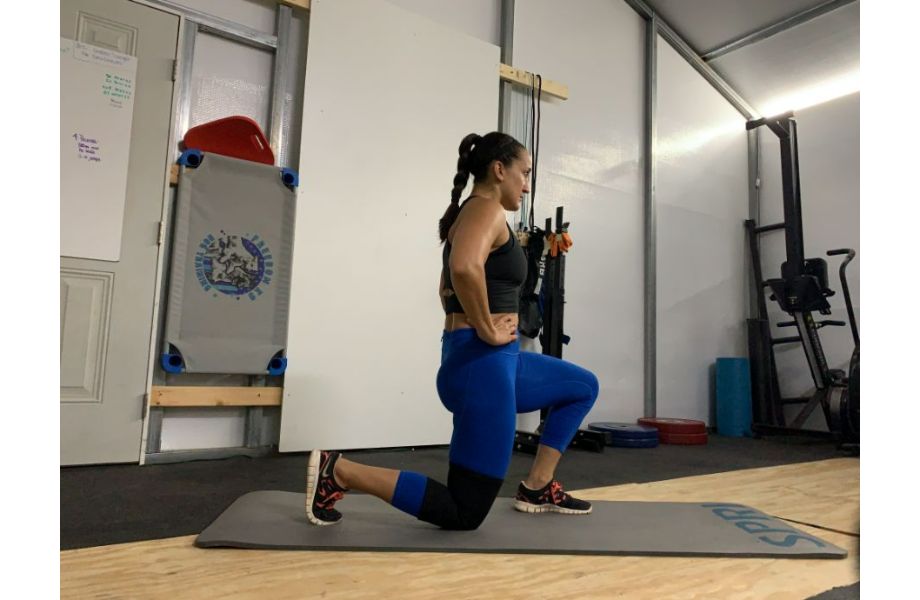
Curtsy Lunge
- Stand tall with your feet hip-width apart.
- Then take a step back with your right leg, crossing it behind your left leg.
- Bend your left and right knees and lower your hips until your left thigh is nearly parallel to the ground.
- Push your left foot through the floor and step with your right leg until you get to the starting position.
- Repeat on the other side. That’s one rep and alternate sides for desired reps.
Final Thoughts
Bilateral exercises need to form most of your routine because this is where your size, strength, and fat loss will happen. But unilateral exercises like lunges will help your bilateral exercises by reducing strength and muscle imbalance between sides. Lunges, when performed correctly and regularly, will
- Improve your balance
- Strengthen your core
- Improve your sports performance
- Increase your performance with bilateral lifts like squats and deadlifts
Lunges, you might dislike them, but they will make you better.
What Muscles Do Lunges Work: Q&A
What muscles do lunges benefit?
No matter the variation, performing lunges strengthens the glutes, hamstrings, hip adductors, quadriceps, hip adductors, and calves.
Which is better, squats or lunges?
Exercisers often like to argue about which exercise is better given two choices. Now, with squats and lunges, they are both excellent, and both have a place in your program. Lunges help strength imbalances between sides which lead to better muscle development. Squats, bilateral and unilateral variations allow you to use (usually) more weight for more size and strength. Both are good, and neither is better than the other.
What are the three benefits of lunges?
The benefits of performing lunges are many, but the three main benefits of lunges are improving muscular development between sides due to reducing strength imbalances. Plus, improving your balance and core strength and making you a better athlete on and off the field.
Do lunges work hamstrings or quads more?
The degree to which hamstrings and quads work during a lunge depends on the variation and length of your step. The forward lunge is knee-dominant, meaning the quads work slightly more than the hamstrings. The reverse lunge is hip-dominant, focusing more on the glutes and hamstrings. With most lunge variations, taking a small step forward or back activates the quads more, and a larger step activates the hips and hamstrings more.
References
- Addison, O., Inacio, et al. (2017). Role of Hip Abductor Muscle Composition and Torque in Protective Stepping for Lateral Balance Recovery in Older Adults. Archives of physical medicine and rehabilitation, 98(6), 1223. https://doi.org/10.1016/j.apmr.2016.10.009
- Michael Vaughan (2018) Can a Unilateral Lower Body-Training Program Increase Lower ease Lower Body Power Output More than a Bilateral Lower Body Training Program? Merrimack College Health Sciences.
Further reading

What is quadrobics? From how to do it to its potential benefits, learn more about the four-limbed fitness movement that’s making huge leaps in popularity. Read more

What happened when a personal trainer and a registered dietitian examined one of the leading electrolyte drinks for this Pedialyte Sport drink review? Find out! Read more

Here are the steps for how to reset a treadmill depending on the brand you have in your home gym. Read more

The Sabre Bar is a multipurpose barbell that works well in most home gyms, but is it right for yours? Check out our REP Fitness Sabre Bar review and find out! Read more

